- News
- Reviews
- Bikes
- Accessories
- Accessories - misc
- Computer mounts
- Bags
- Bar ends
- Bike bags & cases
- Bottle cages
- Bottles
- Cameras
- Car racks
- Child seats
- Computers
- Glasses
- GPS units
- Helmets
- Lights - front
- Lights - rear
- Lights - sets
- Locks
- Mirrors
- Mudguards
- Racks
- Pumps & CO2 inflators
- Puncture kits
- Reflectives
- Smart watches
- Stands and racks
- Trailers
- Clothing
- Components
- Bar tape & grips
- Bottom brackets
- Brake & gear cables
- Brake & STI levers
- Brake pads & spares
- Brakes
- Cassettes & freewheels
- Chains
- Chainsets & chainrings
- Derailleurs - front
- Derailleurs - rear
- Forks
- Gear levers & shifters
- Groupsets
- Handlebars & extensions
- Headsets
- Hubs
- Inner tubes
- Pedals
- Quick releases & skewers
- Saddles
- Seatposts
- Stems
- Wheels
- Tyres
- Health, fitness and nutrition
- Tools and workshop
- Miscellaneous
- Cross country mountain bikes
- Tubeless valves
- Buyers Guides
- Features
- Forum
- Recommends
- Podcast
feature
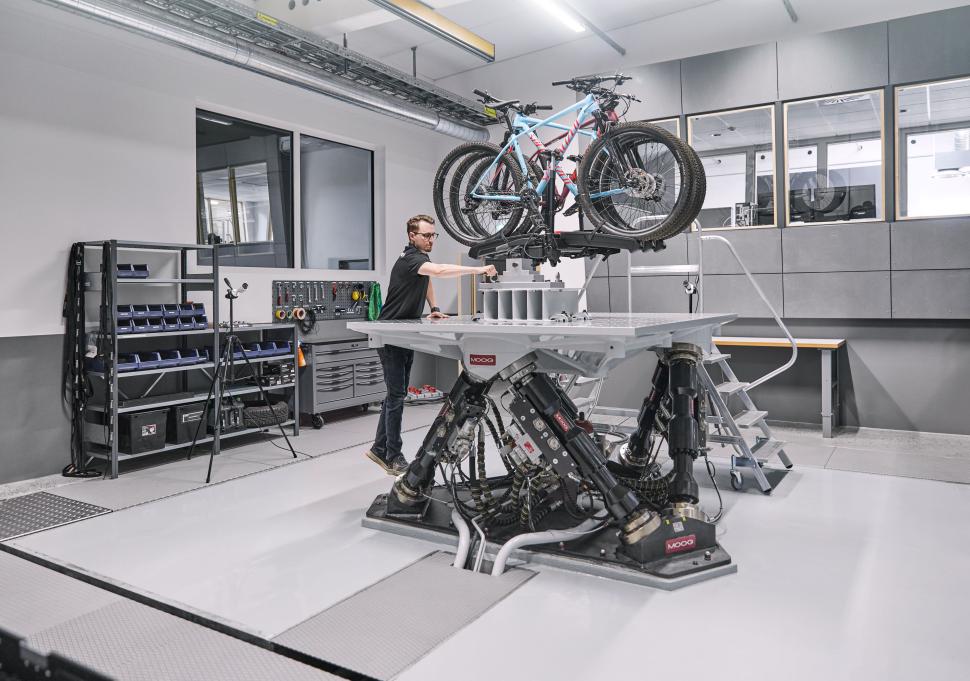 2023 Thule Test Center 10
2023 Thule Test Center 10Passion, prototypes and incredible jawlines: A visit to Thule's design and testing facility nestled in the forests of southern Sweden
A few weeks ago, the world-renowned bike rack and trailer specialist Thule invited me to its Hillerstorp design and testing facility in southern Sweden, and I came away with several key insights. Firstly, what they say about the stylish Swedes is annoyingly true (don’t go to Sweden if you’re having a low self-esteem day), and secondly, the Thule testing facility at Hillerstorp is phenomenal. Perhaps the most impressive and illuminating feature, though, was quite simply the car park. But I’ll get back to that later...
First things first, let’s do the pronunciation. Like some (perhaps) I assumed Thule rhymed with ‘Fuel’ until embarrassingly recently. In fact, it’s ‘too-lee’; although in the native Swedish, both syllables are as Scandi-sharp as their incredible jawlines, making it sound more like ‘Tu-leh'.
Founded in 1942, Thule is one of Sweden’s biggest multinational success stories. From humble beginnings in the small village of Hillerstorp, the company initially grew slowly and organically, making some of the first ski racks in 1962, up through roof racks, surfboard carriers and eventually in 1992, its first towbar-mounted bike carrier.
In 2009 it launched the world’s first rack designed for the heft and bulk of an e-bike, then soft goods followed in 2010. Then came chariot kids trailers, backpacks and more kids carriers and strollers, until in 2014 the company went public. In 2018 another acquisition made Thule the premiere roof tent company, synergising beautifully with its class-leading roof racks. Plenty of prestigious design awards followed.
Now, this might read like the very model of aggressive corporate expansion, and the hallmark of a faceless, profit-first institution; but when I visited the Hillerstorp facility, (just around the corner from Thule's founding cottage), what I saw was entirely the opposite. Thule doesn’t feel like a business prioritising growth and profit, because it seems like it’s part victim, part beneficiary of its own success. Thule has assembled a huge cadre of brilliant designers and engineers, with a prodigious combined passion for the outdoors and adventure that is translated into its kit. And all this success is a just a by-product of making stuff they all seem to genuinely love.
A lot of what I saw I was unable to photograph, including some prototypes for new kit that’s really exciting, and a lot of huge and proprietary machinery. I’m thinking particularly of Thule's crash-simulating sled, a monstrous kinetic sled (and the second-largest in the world apparently), that can push with a force of 2.1 mega-newtons. That's roughly the same as the combined thrust of eight(!) F-14 Tomcats, and so large and powerful that stabilising it requires the pouring of 600 tons of concrete for the foundation. All to make super sure your new EPOS bike rack stays attached to your towbar.
I saw massive stamping machines take coiled metal rolls, and under great pressure, spit out a complex shape every second or so. Automation, as you might expect, is the only way to achieve the kind of precision demanded. Robot arms move at incredible speed down long-shelved (and people-free) aisles, retrieving small parts and raw materials and delivering them where they are needed.
Thule doesn't just make the parts, it also creates the tools to make those parts. In fact, in addition to producing 40 million steel parts per year, Thule also produces 10,000 ‘tool parts’ per year. The tools they make are great, ungodly-sized steel moulds that use 400 tons of pressure (yes tons), and when totalled, represent an $80 million dollar investment by Thule.
It's entirely possible that the only mould in the world to make a specific Thule part is sitting on this shelf in Hillerstorp. And with all this equipment and investment, one has to keep it working. So, the production process runs as much as possible, overnight if necessary, with tolerances checked every single hour down to a 100th of a millimetre. The big advantage this provides is agility. If there’s something to correct or improve in production, the modification can be made to the tool right there, and new versions can then be spat out immediately.
But, I’m getting ahead of myself again. Before a part (for, say, a roof rack, or chariot, or EPOS bike-rack) is put into production, there’s an incredible process of design, testing, iteration, testing, compliance and stress-testing to undergo. If you notice the word ‘testing’ cropped up a fair bit in that sentence, you’re not wrong. Thule is fastidious to the point of obsession about it.
This is Thule's Multi Axis Shaker Table, that in a few hours can simulate the life of a new EPOS bike rack. There's a square black line about a metre away and circumventing the table, a cutaway that effectively isolates the Table from the rest of the facility. Here Thule ensures its products significantly exceed the minimum European safety standards, which themselves are rather more strenuous and demanding than those on the other side of the Atlantic. In fact, there are 25 Thule standards that seismically exceed ISO standards.
The crash sled ensures safety requirements are exceeded in the event of big disasters, and all the products go through extensive climate, humidity, sunlight, salt packing/unpacking, mileage, drop and general abuse tests.
It’s all very impressive, very thorough, and exactly what you want when you’re putting multiple Gs through heavy valuable equipment that’s attached to your vehicle or carrying your loved ones. But I have to say, great as it was, it wasn’t the most impressive part of Thule. For that, we have to go back a step further.
Hillerstorp is home to 250 development staff, rising to about 400 people if you include consultants and those based elsewhere. At least 5.1% of its sales are fed straight back into development, ensuring that the success doesn’t stagnate things, but in fact drives more products and better products.
Thule reported $980M of sales in 2021, so that’s a pretty hefty investment in development just from net sales. It claims to have invested $500m in development in the last five years. Thule tests and iterates from the get-go, with a ten-person team that just works on CAD and simulation and crash-testing, and 25 engineers who do nothing but prototyping. Interestingly, Thule confirmed a newly-assigned team of eight software and ‘smart’ engineers. There wasn't a great eagerness to do it, but apparently demand has been irresistible for ‘smart’ products, so you can expect a Thule app coming in Q4 of this year…
Learning vs discarding
Ok so, bright people have come up with an idea, but can it be made to work? I interviewed one of the premiere knife-makers in the world a few weeks ago, whose forging method and heat-treating regime is so brutal, to push steel to the limits of what physics will allow, that many blades don’t survive the process. Those that do are made of steel that is as hard as it’s possible to get. He commented that you should judge a knife maker by their ‘rejects’ bin, as that will tell you how hard they've been pushing.
Thule echoed that same sentiment, and it rather resonated with me. The designers, engineers and everyone else involved in R+D want to take risks and attempt high-concept ideas, and if all the products invested in actually make it into production, they know they’re not testing limits. The staff I met were unflinching about development, and about learning and improving in a way that feels very ‘un-corporate like.’ It’s a good philosophy. Sports of every stripe teach us if you’re not failing some of the time, you’re not really trying.
Thule’s SVP of Development, Karl Johan Magnusson, believes if they’re not failing, discarding some development project along the way, then "we’re not being ambitious enough."
So Thule doesn't start with a design. It starts with a design creed. Be ambitious, fail some of the time (which sounds a bit like the Facebook credo of "move fast and break things"). So, how do you decide what sort of stuff you’re going to design? You need a mantra. Karl-Johan reiterates the company’s philosophy: “Bring Your Life".
This is where I think Thule’s genius is rooted. If you watch its latest brand movie or just browse the website, the tenor is not really about selling you products, but more about encouraging you to live the life they depict. I don’t really want to buy a bike carrier, but watching that film reminds me that I do really want to go biking across Iceland (or more realistically, perhaps Surrey) and the ‘safety first’ tools are the gateways to living that. And, I shouldn’t be hampered by the rest of my life that’s not cycling. Wives, husbands, children, work, laptops, gear and (since Eurobike), dogs. I should bring them all with me and enjoy nature as a family.
Thule designs and builds every single one of its roof racks here, and makes between 1-1.5 million a year. You need several types of these to ensure they fit pretty much every vehicle in existence.
So I’ve seen evidence that Thule is massively over-delivering in safety as a result of fastidious testing. There are hundreds and hundreds of people working on the designs, and the company philosophy rewards ambition and doesn’t stigmatise failure, it seeks out the learning from it. Finally, the engineers and production facilities that produce the final products are as bright and as cutting edge as you’d imagine.
However, the most impressive ‘x’ component I referenced at the start, and that you’d miss just by looking at this, is what I saw evidence of in Thule's staff car park. It was probably the most powerful ‘inadvertent advertisement’ for Thule. Almost every car of the hundreds in the car park was kitted out with a roof rack and/or towbar rack or trailer, and some had bikes already/still strapped to them.
For the staff, designers and engineers, their day in Hillerstorp starts at 7.45am, and they’re done before 4pm. Judging by their cars, most of them grab bikes and family and head to a bike trail of some sort, with plenty of daylight hours to get some riding in. The reason they all looked so fit and lean was not Atkins, it was an outdoors lifestyle. I guess they were living the company moto, "bringing their lives".
One of the engineers who demonstrated the new EPOS showed how easy it was to stack three bikes on it. The two Specialized full suspension bikes and gorgeous S-Works Crux were all his bikes that he’d brought in for the day.
The passion and experience they all have for Thule products is born out of day-in, day-out use. They are the design lab, and the testing lab above and beyond everything that happens inside Hillerstorp. Thule’s marketing you a lifestyle that the staff appear to absolutely live and expound themselves. No wonder the passion feels genuine, and they’re all so bloody handsome and happy…
Tom is features and tech writer who's been writing and riding for over 20 years, and has had misadventures on almost every conceivable bike. From single-speeds, to aero race-bikes, gravel bikes, ebikes and mountain bikes, he's a big fan of almost everything that rolls on two wheels.
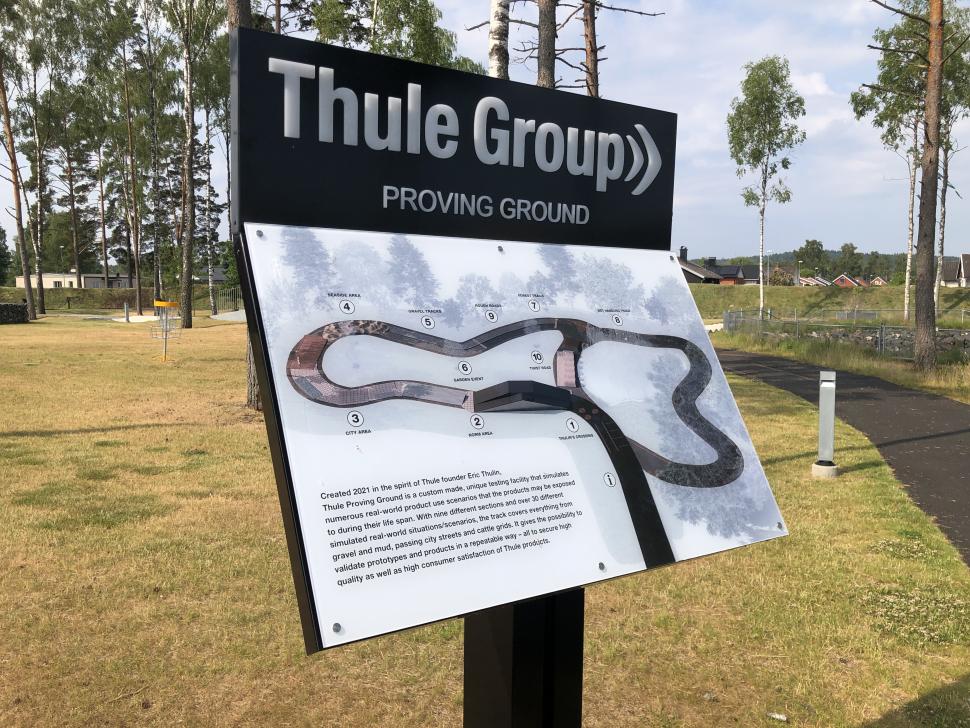
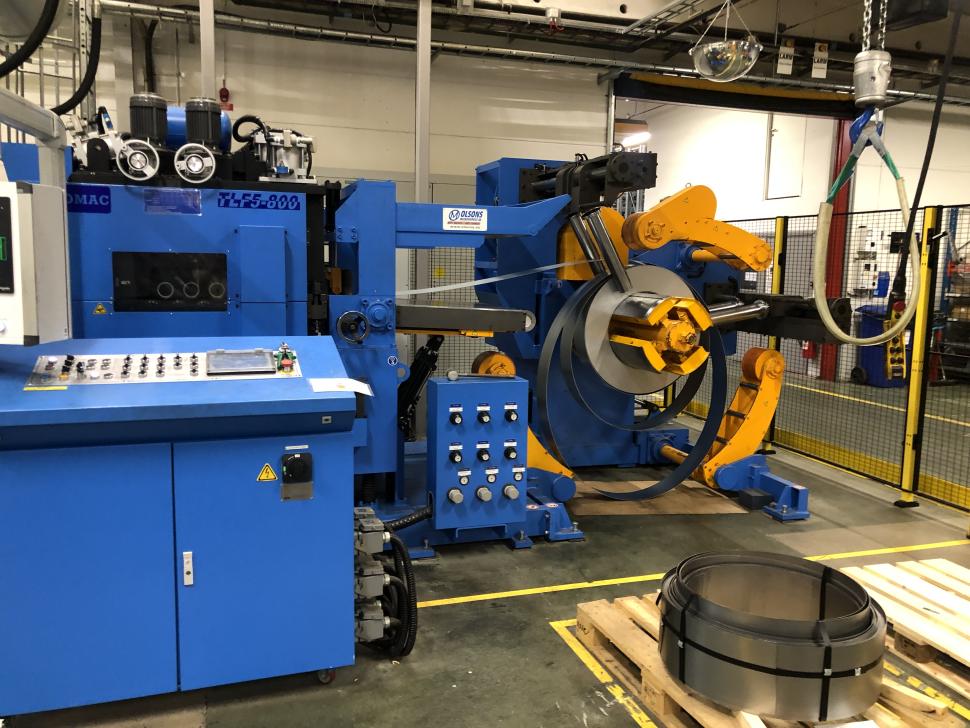
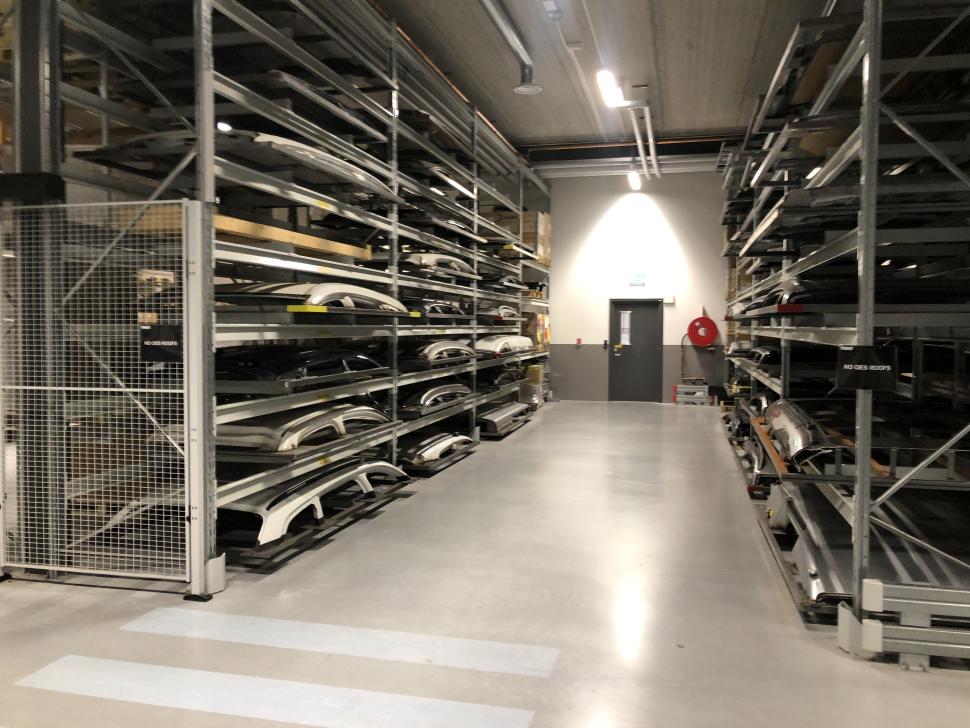

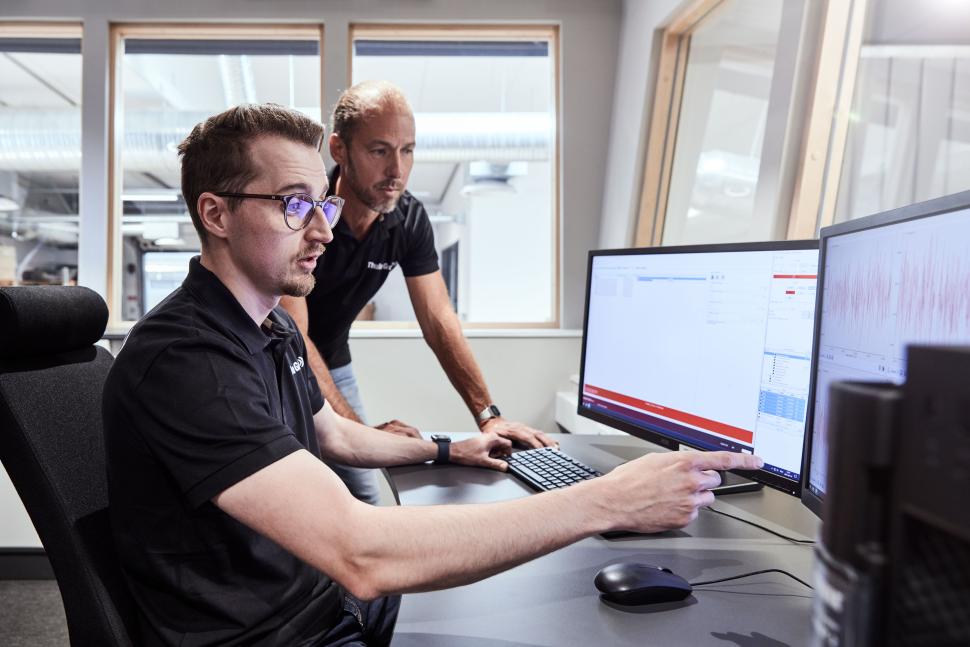
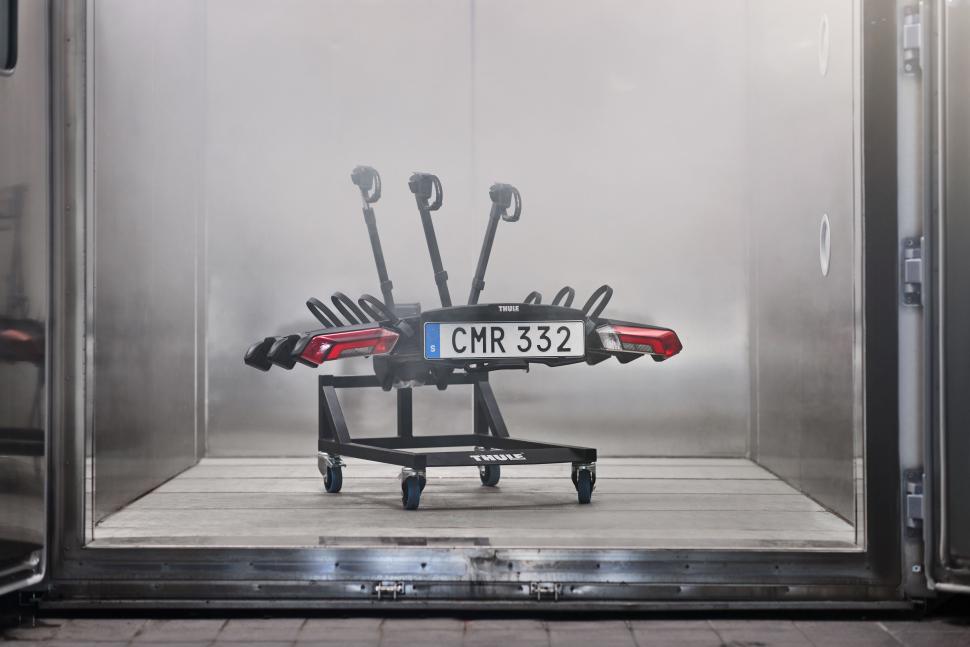

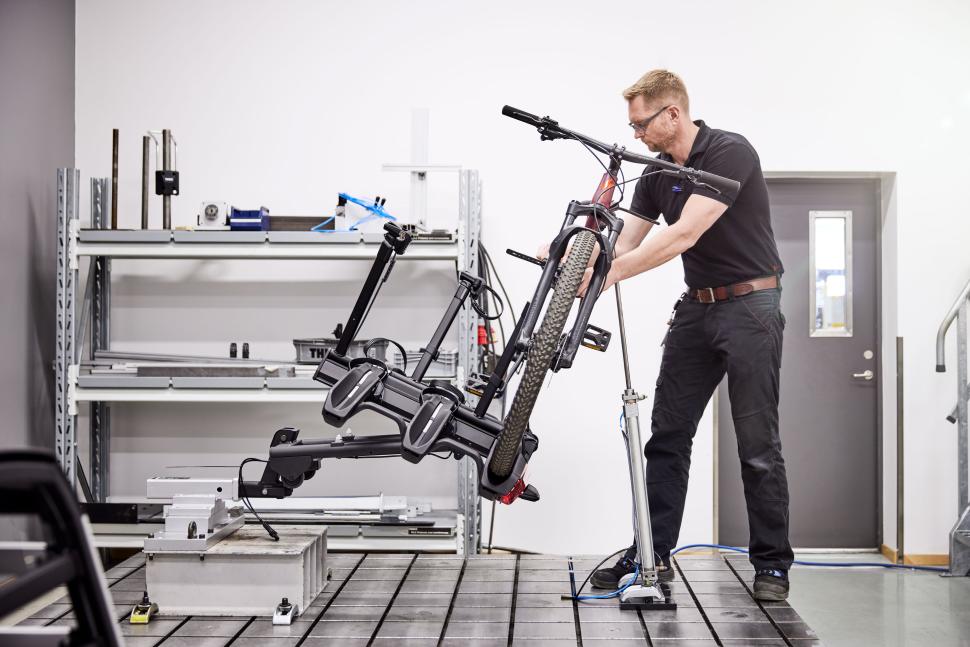
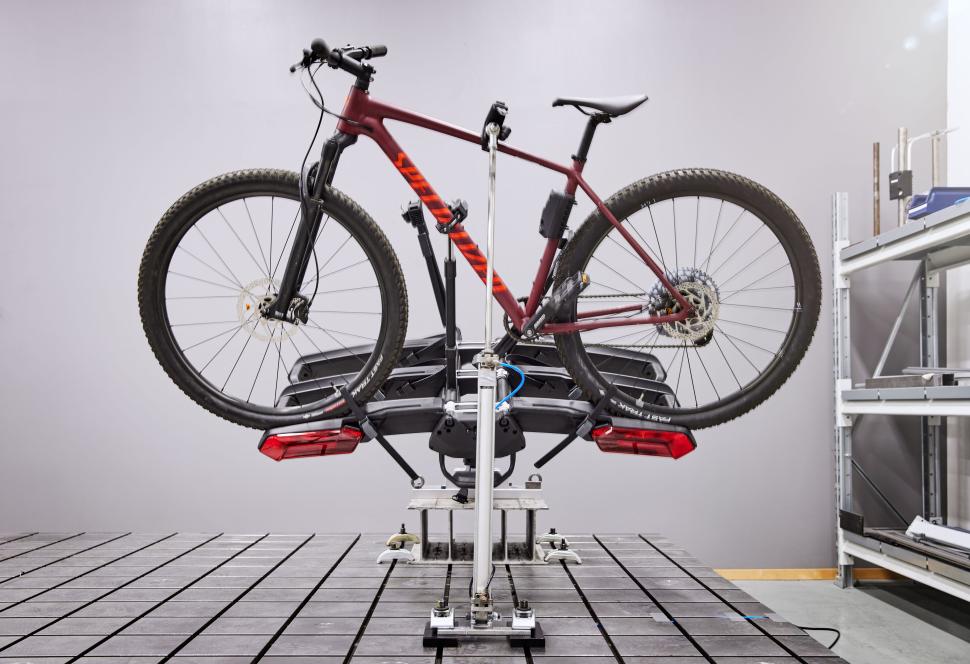


Oxfordshire: Potholes 'out of control' and risk to cyclists...
You don't benefit from schools? You've never seen a doctor, a dentist, a teacher, didn't go to school yourself and don't care about the tax paying...
Another 'sound-alike' mid tier offer, so I get all excited and buy a bunch of them thinking I've got an absolute steal. Only to then realise I've...
first cast out the beam out of thine own eye
Which is, ironically, very rare.
New addition to the fleet, a Specialized Aethos. This is the Comp model, 12 speed 105 Di2, 10r carbon layup in pearlescent white, with upgraded...
Local 'nimbyism' dismissed as consensus is new scheme will 'increase footfall'...
If they're formally recognising phone addiction, and have noted that our eating habits (driven by stuff people want to sell us) are obeseogenic ......
Yes. Just like there's no push rod brakes or U brakes any more. Get with the program granddad.
Looks like the perpetrators were not Italian